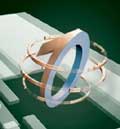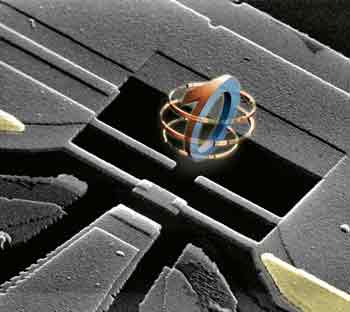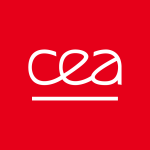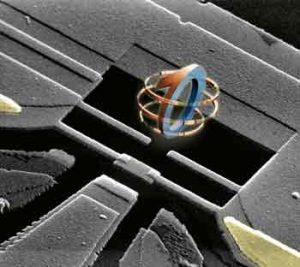The results obtained by scientists at the CEA’s Condensed State Physics Unit (SPEC), published in the journal Science on May 3, 2002, mark an important step towards the quantum computer, in principle much more powerful than today’s computers.

Quantum information processing is a fast-growing area of research, following the recent discovery of quantum algorithms that outperform those used in today’s computers. Their superiority stems from the massively parallel computing made possible by the laws of quantum physics.
Although no quantum processor has yet seen the light of day, numerous teams have already demonstrated the validity of quantum computing concepts through experiments using microscopic objects such as ions trapped in cavities, or nuclear spins in molecules in solution (NMR), as quantum bits. However, these systems lack the flexibility of electronic chips, which can be integrated and interconnected on a large scale. Achieving a quantum bit that could be used in an electronic circuit was, however, a challenge. The larger the system, the more difficult it is to maintain its quantum character. While atoms are naturally quantum, electronic devices with billions or more atoms and external connections are not. This “quantumness” is measured by the lifetime of a superposition of two quantum states, the coherence time.
The SPEC researchers’ experiment involved a quantum bit consisting of a loop of superconducting metal (aluminum) interrupted by tunnel junctions (i.e. a Josephson junctions). This circuit, dubbed the “Quantronium”, is the most efficient electronic qubit to date. The Quantronium’s advantage is that it is well decoupled from the external circuit, while remaining connected and therefore measurable at all times. Thanks to this decoupling, the coherence time is long enough to allow experiments never before performed on an electronic circuit.

Micrographie électronique colorisée du premier bit quantique à l’état solide: le Quantronium. Un bit quantique peut être préparé dans une superposition quelconque de ses deux états de base 0 et 1. Crédit : CEA
The quantum state of Quantronium was driven by sequences of radio-frequency pulses, just as that of an atom can be driven by laser pulses. Several classical atomic experiments were carried out on Quantronium. They demonstrated its unambiguous quantum character, and the quantum coherence time was determined. This time is already long enough to envisage the manufacture of circuits with several quantum bits coupled on a single chip, and thus to realize quantum logic gates.
The next step should be the realization of all the elementary logic operations required to operate a quantum information processor.
In today’s conventional computers, information is stored in basic building blocks, the bits, each containing a choice of 0 or 1 values. Today, we’re thinking of replacing these conventional bits with quantum bits, or qubits. These no longer contain one of the two values, to the exclusion of the other, but a combination of the 0 and 1 values (known as a superposition of states). A computer exploiting this possibility, opened up by the laws of quantum physics, could calculate in a massively parallel way, i.e. simultaneously for all the values of the qubits, and thus considerably surpass the power of the classical computer.
Référence:
Read the full article on Science magazine:
Manipulating the quantum state of an electrical circuit,
D. Vion,* A. Aassime, A. Cottet, P. Joyez, H. Pothier, C. Urbina, D. Esteve, M. H. Devoret
Science, 296 (2002) 886.

More information: Web site of the Quantronics group of the “Service de l’état Condensé”.
CEA contact: Denis Vion (SPEC/Quantronique)


